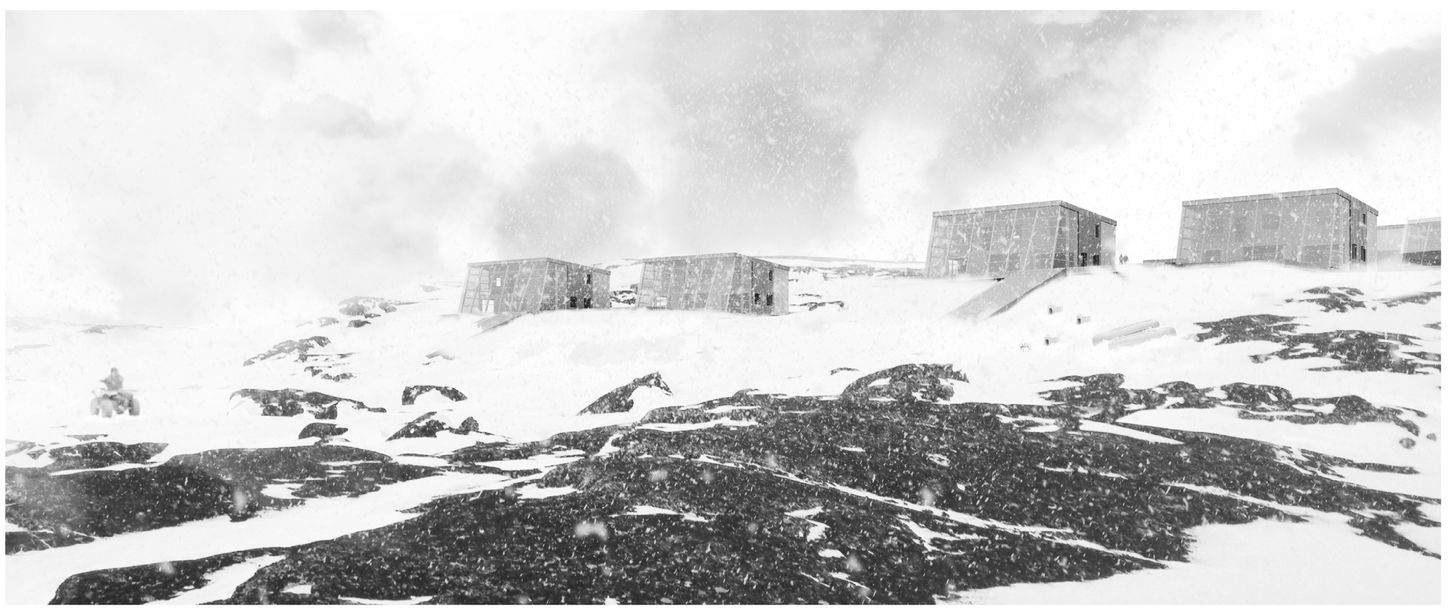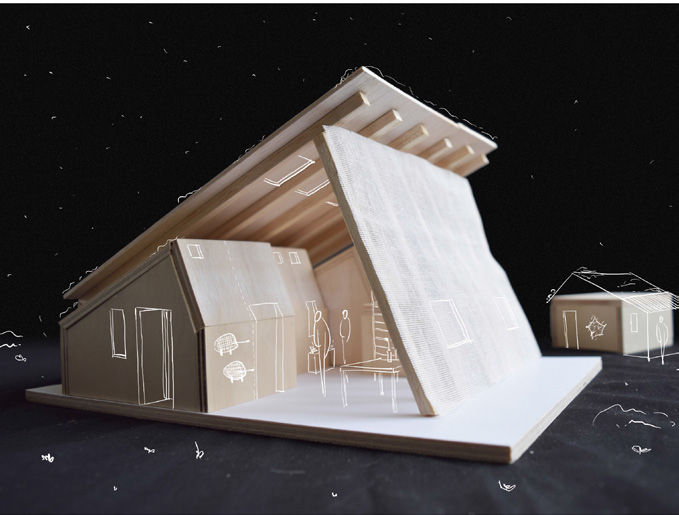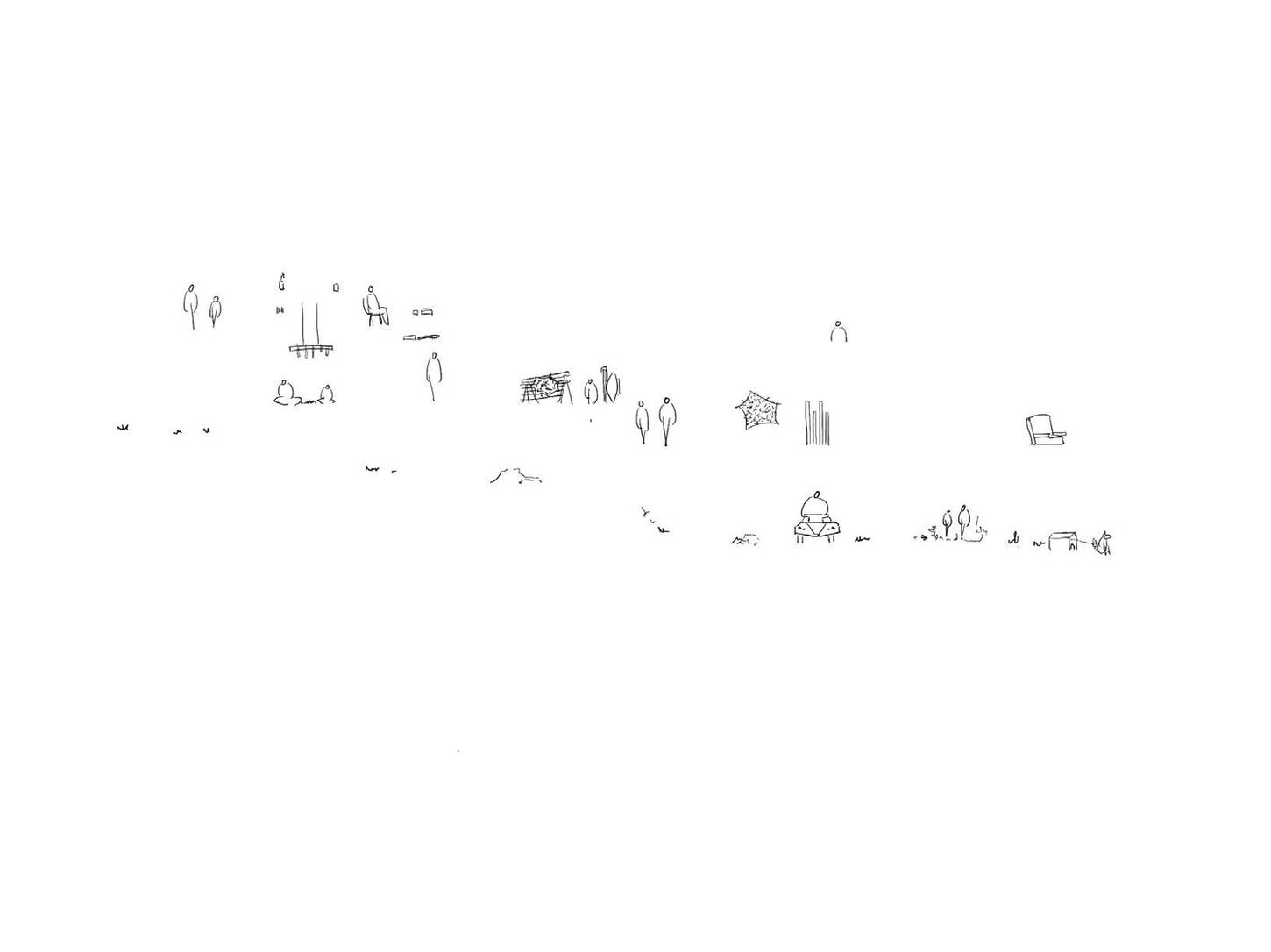

Thomassie Mangiok
The right space for a bit of everything (2022)
"Imagine expanding houses to accommodate new relatives, to grow food, to process traditional food, to sew, to work on art, and so much more."
Inuit “make do” with house models they have neither chosen, designed, nor built. Today, most households live in a house they do not own.
Renovations rarely respond to or keep up with the growing and evolving needs of these families. In the current government-run programs, self-renovations or the building of modest extensions (except for screen porches) are not permitted. As a result, many houses are overcrowded, compartmentalized, and lack privacy.
What We've Learned
Realities
Paths for Change
The home is a vital space for togetherness, as it helps forge and nurture social bonds, transmit culture and knowledge, and solve conflicts.
Inuit stress the need for more flexible and adaptive housing space or layouts in order to accommodate and adapt to changing family situations and dynamics. In the long run, larger families—especially with young adults searching for more independence or elderly requiring assistance—need a more versatile living environment. In the same way, day-to-day traditional activities and welcoming extended family and visitors require flexible rooms or spaces that facilitate interaction and flow.
Spatial versatility is therefore crucial to encourage appropriation and attachment over time, to practice traditional activities, and to move about comfortably. It fosters both togetherness and privacy while ensuring a responsive fit with evolving family situations.
Calls to Action
38. Allow for flexibility in the layout
Design “reversible” spaces that can easily and quickly accommodate, adapt, or be transformed.
Work with free plans that avoid limiting partitions in favour of versatile configurations where multiple activities can take place.

39. Include mobile partitions for versatility
Design floor-to-ceiling furniture that can be moved and serve as both storage and partition, depending on the activity, number of people gathering, or changing family situations.

40. Plan for long-term adaptability
Ensure spatial transformation over time by anticipating the household’s future needs.
Favour simple construction layouts and methods, and easy to find/replace construction materials to create extensions (in line with incremental housing principles).
Include sufficient windows in larger rooms with proper light and air flow into the future partitioned spaces.
Think of load-bearing walls in anticipation of adding a mezzanine or a storey for extra bedrooms.

41. Design for privacy
Include private spaces for quiet time or calm activities, such as studying, sewing, or sleeping.
See that each room has access to natural light and ventilation.

As imagined in this project entitled Seventh Season, the Inuit house is one with its environment and the land, continually adapting across time and seasons.
The project focuses on the sensorial qualities of the house as well as on the formative, self-determining potential of self-building by its inhabitants. The simple structure of the house allows for extensions. At the front of the house, a generous flex space faces the land. Its translucent shell (possibly made of tent canvas) provides space for significant family and cultural activities. It also showcases construction techniques traditionally used for crafting qajaqs.
The flex space adapts to activities by transforming with to the seasons. In warm weather, the house opens up, with activities extending to the deck and ground. In the cold season, it retracts and protects the house.
The house is permeable to the senses. It lets the land in.
By M. Mailhot, École d’architecture de l’Université Laval, 2017
Letting the Land In
Innovations: Thinking Outside the Box
References
Open Access
Bayle, M (2023) Réflexions pour une architecture significative : univers symbolique et matériel de la maison chez les Inuit du Nunavik. Mémoire de maitrise, Université Laval. URI : http://hdl.handle.net/20.500.11794/113943
Blais, M and Vachon, M (2020) Habiter et pensées nomades : Réflexions sur l’architecture des Maisons des jeunes (et intergénérationnelles). Études Inuit Studies, 44 (1-2), pp. 237-260. DOI: https://doi.org/10.7202/1081804ar
Blais, M et al. (2017) Récits de voyageurs. Maison nomade, vagabonde. Imagination + construction + expérience. Habiter le Nord québécois, U. Laval, Québec. https://issuu.com/hlnq.linq/docs/recits-de-voyageurs
Evans, P, Palliser, T (2014) Housing crisis in Inukjuak (Nunavik), limited full-time employment opportunities, and design charrette. ArcticNet Annual Meeting, Quebec City. https://arcticnetmeetings.ca//housing/docs/1.3_evans_palliser.pd
Mangiok, T (2022) The right space for a bit of everything. ArcticNet Annual Scientific Meeting, Dwelling Differently Topical Session, Living in Northern Quebec, Quebec City. https://www.youtube.com/watch?v=cjfKmmhBAgw
















